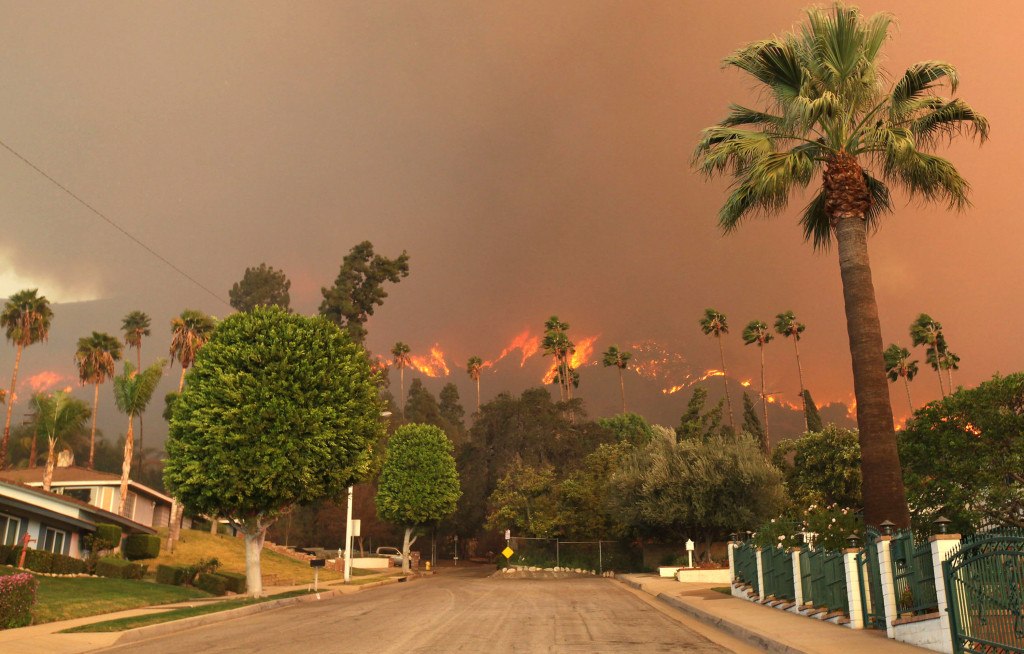Utility giant PG&E Corp. capped its best day since going bankrupt in January thanks to California’s governor.
Gavin Newsom called on lawmakers on Friday to find a way to help the state’s utilities cover the costs of devastating wildfires — costs so crippling that PG&E was forced to file for Chapter 11 in January while facing $30 billion in liabilities. He issued a report outlining possible solutions — including an insurance fund utilities could tap into — sending the clearest signal yet that California will move to keep its power companies solvent.
“We all have a burden and a responsibility to assume the costs,” Newsom said in a news conference when the report was released. As a result of the wildfires, he said, “We are in a very precarious state.” Newsom, a Democrat, asked for legislation to be passed by July 12. His party holds the majority in the state legislature.
In doing so, Newsom delivered what Wall Street has been waiting on for months: Clarity on exactly what the state will do to help utilities, including Edison International and Sempra Energy, avoid the same fate as PG&E. Edison’s Southern California Edison utility and Sempra’s San Diego Gas & Electric have both seen their credit downgraded due to the wildfire risks and face junk status within months without a fix from the state.
PG&E, which didn’t immediately respond to a request for comment, jumped 21 percent to $23.08, its highest close since Jan. 24. Edison surged 7.2 percent at $67.13, and Sempra gained 1.4 percent.
While he called for action to aid utilities, Newsom wasn’t shy in addressing PG&E’s culpability during a press conference. He raised the idea, on several occasions, of a possible government takeover should PG&E continue to be “bad actors” and “mislead” the state. Newsom noted that, in the report, “there is a word that drives shivers up people’s spines: It’s called municipalization.” And, he added, “If they don’t get it done. We will get it done.”
Newsom’s report outlines policy options that include a catastrophic wildfire fund utilities could use for liabilities and a liquidity fund. It doesn’t make an outright recommendation on whether the state should kill a legal doctrine known as inverse condemnation that holds utilities strictly liable for damages should their equipment cause a fire. But it does suggest that lawmakers consider changing the doctrine to a “fault-based standard” that would make utilities responsible if there was misconduct involved.
Also recommended in the report: Reform the California Public Utilities Commission that oversees power companies. “The state can take no options off the table” in the PG&E bankruptcy case, including municipalization of all or part of operations; breaking up PG&E’s territory into smaller markets; and focusing its operations on pipes and wires. Consider creating a state power-buying agency to backstop utilities. Weigh a liquidity fund that would provide bridge financing to pay for fire claims while regulators weigh whether ratepayers should pick up costs. Utility shareholders and ratepayers may pay for the fund. Explore a catastrophic wildfire fund that would help utilities immediately pay for damages if they face massive liabilities. Shareholders could contribute, and insurance companies would agree to cap claims.Newsom’s report drew a mixed reception. Key lawmakers pledged to work with him, with Senate President Toni Atkins saying legislators will “dive into the details” of the report in the coming weeks. Advocacy group Consumer Watchdog meanwhile said a “PG&E bailout shouldn’t be buried in the fine print of legislative action.”
While California’s utilities rallied, Moody’s Investors Service said the impact on the companies’ credit remains to be seen. “The report represents concrete progress toward options for managing wildfire risk – a credit positive,” the ratings company said. While Moody’s said none of the report’s suggestions alone would mitigate utility risk, “combined, the strategies start to exhibit more promise.”
Was this article valuable?
Here are more articles you may enjoy.


 Singer’s Elliott Sued by PE Firm in Escalating Fight Over Money
Singer’s Elliott Sued by PE Firm in Escalating Fight Over Money  US Lawmaker Unveils Bill Requiring Manual Car-Door Releases
US Lawmaker Unveils Bill Requiring Manual Car-Door Releases  Surging Oil Tanker Insurance Points to Growing Black Sea Chaos
Surging Oil Tanker Insurance Points to Growing Black Sea Chaos  Musk’s xAI Faces California AG Probe Over Grok Sexual Images
Musk’s xAI Faces California AG Probe Over Grok Sexual Images 